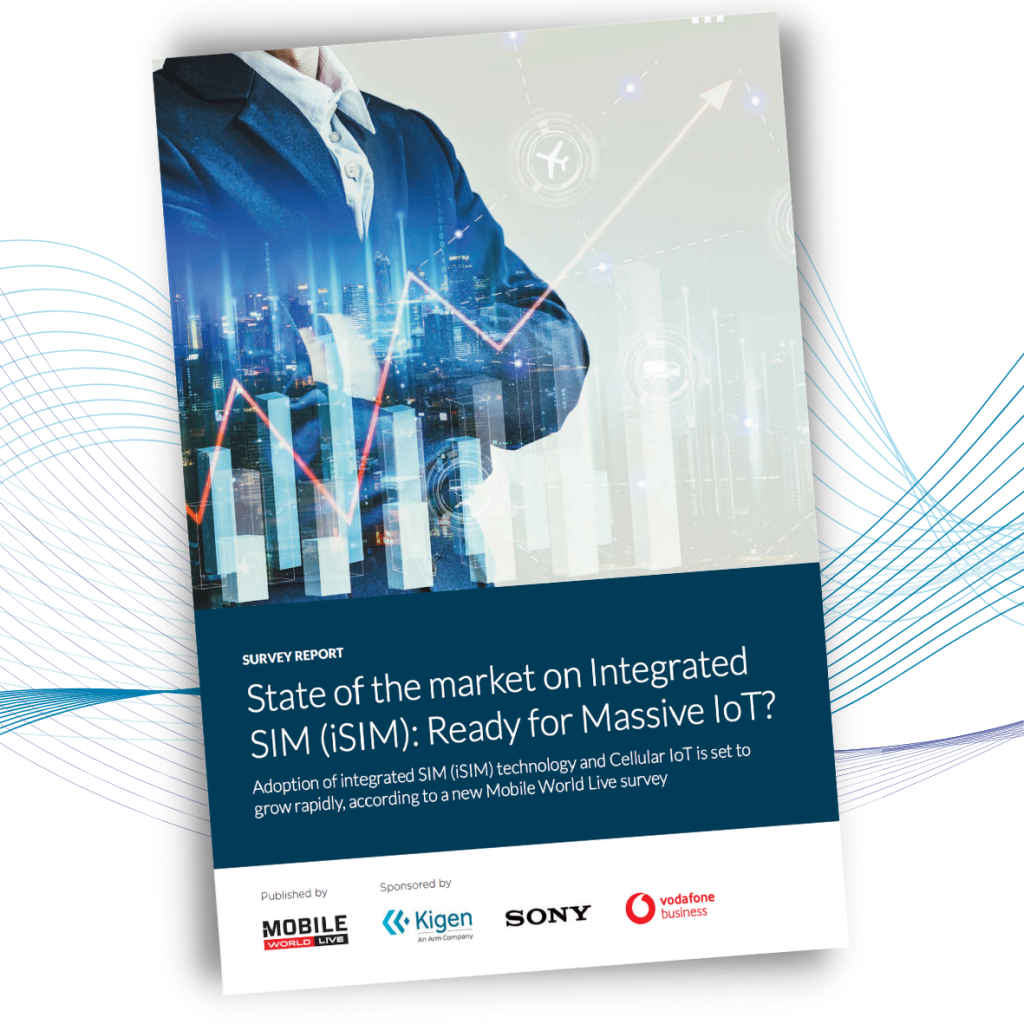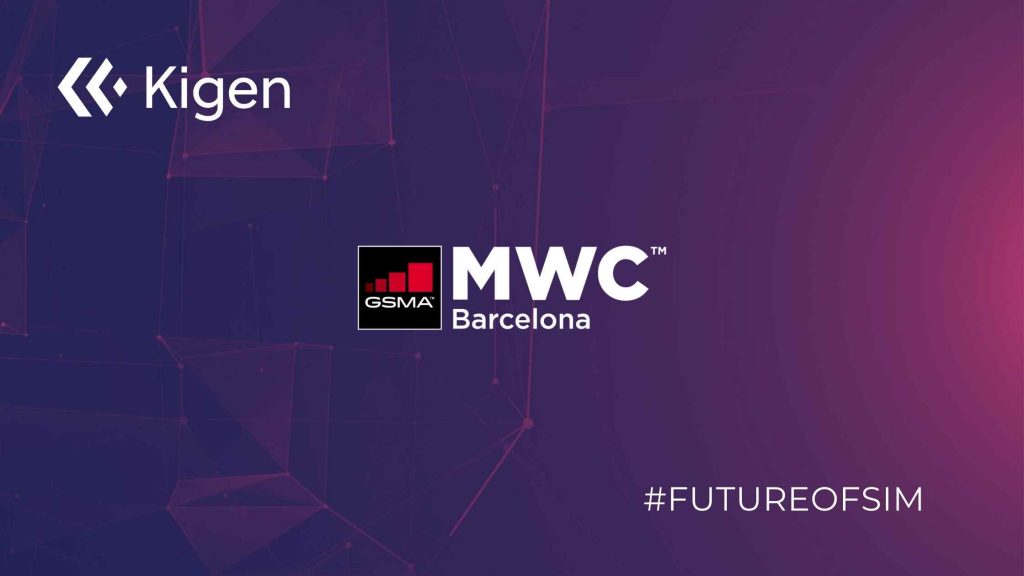
- Resources
- Blog
Accelerating Innovation on the IoT Edge with iSIM
The rate of IoT deployments continues to rise, firmly entrenching connected devices into our daily lives from improving industrial applications, which may have been manual and laborious to new possibilities such as in wearable medical devices. Chipset makers, MNOs, service providers and device makers are prolonging this growth curve by moving processing powers to the edge of their Cellular IoT networks. Secure, trusted connectivity and processing at the edge will be the factors that propel the IoT into the next stage of growth. We sat down with some industry experts to discuss the challenges addressed by cellular connectivity when deploying artificial intelligence (AI) and machine learning (ML) at the IoT edge.
The contents of this blog are based upon a more in-depth webinar: ‘Accelerating Innovation on the IoT Edge with iSIM’. A full recording can be viewed here.
The Economist Intelligence Unit reported in 2020 that 90% of companies with extensive IoT deployments link their real-time data gathering with their AI planning. But AI practitioners (including our panel members) believe that IoT ecosystems face three hurdles: data security, growing carbon footprints, and device latency. Although most IoT deployments are not massive (typically under 5k nodes), Brian Partridge of 451 research highlights a 65% growth rate between now and 2024.



Early AI and ML models were cloud-native, and cloud remains the home of much of the inferencing that takes place today. But this architecture suffers from latency and bandwidth issues, which has prompted the move towards edge computing, where inferencing can be done locally without the need to relay to the cloud. Where resources are limited, training can take place in the cloud and inferenced at the edge. This hybrid approach can offer computational performance with low latency.
Newsletter Sign-up// – Light Gray Inline
Sign-up for our newsletter to receive the latest from Kigen.
There are various IoT use cases where edge computing is not practical and that’s why we’re seeing growth of Tiny ML, a framework which provides for machine learning algorithms at the microcontroller level. This new realm of machine learning applications has challenges of its own and has catalysed organisations to consider how they can integrate AI in their designs in the most optimised way.
New hurdles
As we transition from the cloud to the edge, we see a demand for devices that have a reduced impact on their batteries and the environment (notably through data transmissions). At the same time, we see lots of capabilities growing at the edge in the form of AI/ML solutions running into small footprint processors and the need to futureproof for developments like 5G. This highlights the need to protect the edge, which is processing more and more intelligence. Typically, we see a greater number of companies trying to embed their vertical knowledge into their device, bringing more insight to on-device analysis.
According to Brian’s research, organizations are finding that there’s a lot to learn in this new realm and are still struggling with the traditional issues like the connectivity stack and issues with roaming, which account for 43% and 49% of project disruptions respectively (citation). The good news is that 65% of the same audience see 5G emerging as the most popular form of IoT connectivity. So, we have the emergence of 5G and Tiny ML, both with their own hurdles that impede manufacturer’s development.



So how do we address this and how can a solution based on integrated SIM (iSIM) help? iSIM is a natural evolution of a plastic SIM and eSIM. It authenticates the device to a network while providing security for the application, and we see a new breed of OEMs leveraging this innovation. With Tiny ML and iSIM both being chip-based solutions, organisations can eradicate risk and latency in their devices.
Stick to your knitting
Dr. Juan Nogueira of Flex highlights the complexity: “There are many unknowns. We get many questions such as ‘which sensors do I need for this application’, ‘which connectivity fits better to my use case’ and ‘could I apply machine learning technology?’.”
OEMs need to verify their concepts can scale, which is the opportunity Flex see in introducing the iSIM version of iENBL together with Kigen, Sony Semiconductor IL, and Murata. This clever bundle incorporates a selection of sensors, connectivity stack, and the iSIM technology, packed in a small, ruggedized enclosure. It allows OEMs to move from their idea to field testing quicker after doing a small programming activity. Through in-field testing, OEMs can verify which sensors they need, what connectivity they want to use and to see whether they can apply machine learning at the edge or need to relay with the cloud.



It won’t necessarily eradicate the challenges presented by new technology, but it can help streamline development processes and make connectivity a secure and modular element that reduces the path from conceptualisation to industrialisation.
Security Baked In
Kigen is making security and trust the foundation of cellular IoT connectivity through iSIM. Alongside companies like Flex and Edge Impulse, we make up an ecosystem of partners that offer acceleration for time to market from maturing a concept with access to market leading cellular chipsets or modules to industrialization. This hardware is ready to connect securely and embed processing capabilities at the edge of the network- Reducing risk, energy and latency.
Just like a traditional SIM, iSIM enables both network authentication and the applicative security needed to identify devices when relaying with various clouds or into an organisation’s own backend for your solution. iSIM is introducing these levels of trust to the early stages of the supply chain, allowing manufacturers to do more with increased levels of trust.
Examples of verticals that can benefit from this type of integration are safety, logistics, smart cities, infrastructure, and health care. Safety and healthcare devices are emerging that allow users to sync and offer improved protection for our aging population. They can work autonomously, warn about conditions, and – with AI algorithms embedded directly into devices – be incredibly smart while having a strong level of trust and intuition. Jan Jongboom of Edge impulse adds:
“We need our IoT devices to feel and see and understand everything happening around its use case. It’s better to have an asset that knows when it’s being loaded onto a car rather than just always ‘moving’, but it might still be in the warehouse. We want to build solutions that use IoT sensor data in the broader sense – from accelerometers to microphones – to collect data and learn from the data through normal signal processing. This could include new machine learning techniques like neural networks and then help deploy that to any type of embedded device.”
In safety and healthcare verticals, device makers can incorporate maximum privacy and security from the get-go, which become their point of differentiation. In the logistics sector, we see a growing need for smart tracking of assets at low cost. And here, iSIM is making it easier for organizations to bring their IoT vision to life and enabling innovation thanks to a very tight integration and embedded security.
This democratisation of cellular IoT happens to coincide with a point in time when the market embraces the functionality offered by ML. We can introduce new players who bring additional value and opportunities through security and by removing complexity.
Our expert panel discussion that explores this in more detail is available for viewing: Watch now



